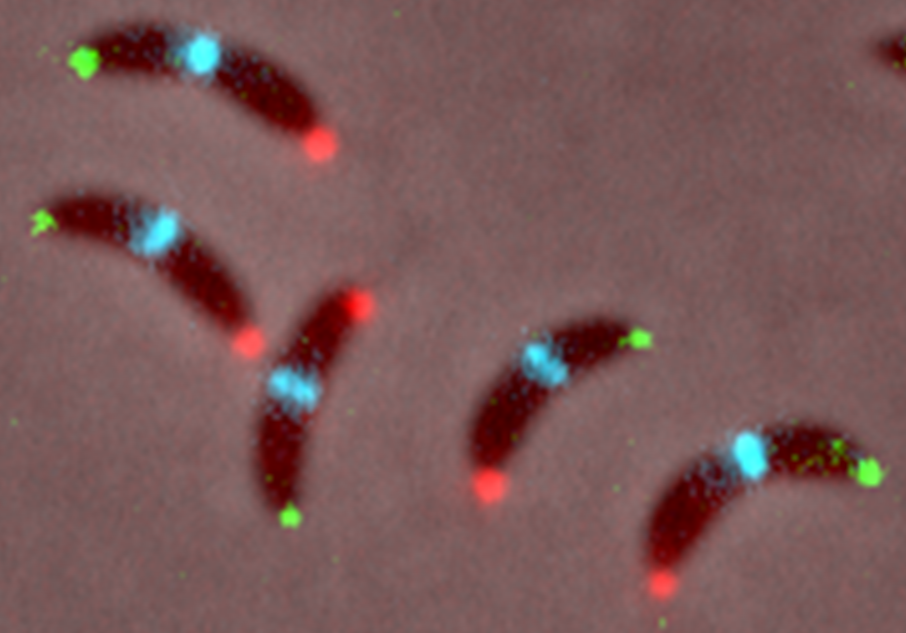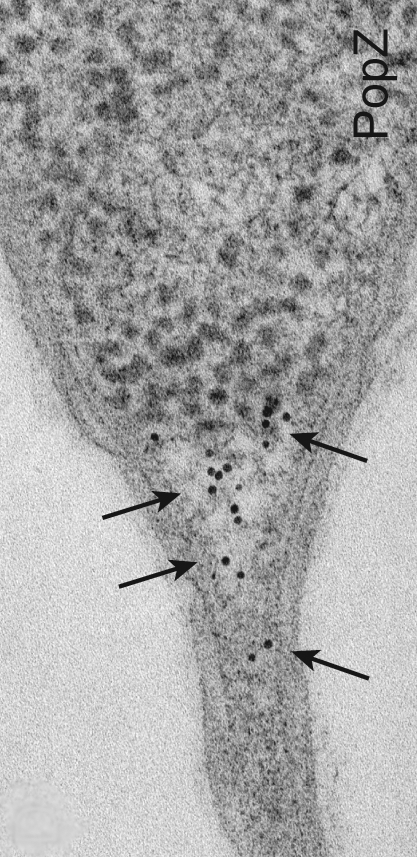Asymmetric cell division entails the unequal separation of components between daughter cells. When this includes
factors that regulate gene expression, the two daughter cells can run different genetic programs. Cellular
asymmetry underlies basic developmental mechanisms such as tissue differentiation and stem cell maintenance,
and is therefore critical for multicellular life. Interestingly, many bacteria are also capable of asymmetric cell
division, and just as in animal cells, cell division produces two morphologically and transcriptionally distinct cell
types - a basic form of multicellularity.
In Caulobacter crescentus, asymmetry is created by the establishment of two distinct multiprotein complexes at
opposite cell poles. The localized proteins include at least seven histidine kinases and response regulators, a
protease complex, and a host of other factors, and all of these work together to establish a robust pattern of
asymmetric gene expression in the daughter cells. Such a sophisticated mechanism must have originated from a
simpler form, but its complexity makes it difficult to deduce the basic framework. What are the minimal
components needed to establish cellular asymmetry and generate differential gene expression, and how could
such a mechanism have evolved?
An attractive starting point for
addressing these questions is the polar
organizing protein PopZ. PopZ is an
essential component of the polar
multiprotein complexes in Caulobacter
crescentus. The gene is conserved
through alpha-proteobacteria,
indicating inheritance from an early
stage of prokaryotic evolution.
Interestingly, PopZ shows a strong tendency to
accumulate at a single pole when expressed
heterologously in E. coli, an unrelated species
without robust asymmetry or cell polarity. We are
testing the hypothesis that PopZ was an early
player in the evolution of cellular asymmetry in
the alpha-proteobacterial lineage, and that it is
part of a core polarity mechanism from which
more elaborate systems have evolved. Can PopZ
be used to build simple polarized signaling
complexes in E. coli and can they be used to drive
asymmetric gene expression in this system?
Luis Comolli, LBNL





















